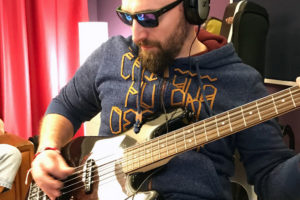
Increasingly, independent artists on a budget are turning to high-end studios. How do they afford it? Often by depriving themselves of the figure of the producer and thus “saving” funds in the name of a better product. For those who are experienced and aware of what they are doing, this is a good move to get the best for their projects.
Often, however, when artists also play the role of producers, they waste too much time making decisions and can’t focus on creating the music.
If you plan to be in such a situation and also perform the function of a producer when recording in a professional recording studio, use these basic rules to get optimal results.
Basic Instrument Arrangement.
What really helps engineers in the studio is knowing the basic instruments in the song’s content. The preparation and installation processes take time. Drums, guitar, bass. Especially when the musicians have to be together and it’s recorded at the same time. Each record and each song has many characteristics. A group of 10 salsa performers is something quite different from a string quartet. The studio engineers will most likely request this exact information at the session. If they get it, it will help a lot to optimize the process and installation. Also, have as clear an idea as possible about any additional instruments you’re thinking of adding to the recording. If you think a djembe, cajon, or clappers would sound good on the song, tell the engineers to anticipate recording those instruments. You might not like how it turns out in the song. But the sample will give you an opportunity to hear and decide. Otherwise, you’re left with the feeling that you haven’t finished the song and you’ve made a compromise.
Reference records.
Although the sound of a song can change quite a bit when mixing, it’s important to aim for a specific sound from the start. Things like the right placement of the microphones or choosing the right instrument with a particular sound can totally change a song in a direction that even mixing can’t change. As a tip, if the idea for the song came to you by playing it on a certain instrument, start your search for the sound in the studio with that one first.
Before going into a professional recording studio, try to find a recording of a song that comes closest to how you want your music to sound. You can also use several different entries. For example, in one song you like how the drums sound, in another the guitars, in a third the vocals. This is a very good way to describe your wishes to the engineers in the recording studio. They, for their part, will easily recognize how this sound is achieved and will try to fulfill your expectations. These reference records are very important as they will save time and a lot of frustration and guesswork on the part of engineers.
The recording process.
Try to specify how you want the recording session to go before entering the studio. Are you going to record several instruments together or in some combination. In what order you want them to be recorded. These are important and difficult decisions, which, however, depend on the smooth running of the session and, respectively, the quality of the recording. You can best judge this when you demo the songs at home. There you will most easily feel what is most suitable for the song, how exactly to present its energy and essence in the best way. Even rehearsing the songs alone or in groups of two or three musicians will give you a clearer idea of what works best for her. Knowing these features when entering a studio, you will be much more optimized and specific in your requirements and decisions.
Description of song structure. You can see an example version of the description here.
If you don’t have the technical ability or knowledge to do this electronically, hand writing on a piece of paper does the same job. You can download a song description table template here. Describe the song structure, chords, and anything else you feel would facilitate communication between you and the engineers in the recording studio. For example, you want to record the penultimate bridge. If the sound director has a diagram in front of him, he would find it much easier to navigate where the place is during recording. Otherwise, you mutually waste time wandering and guessing. Clear communication is an essential component of productivity in the studio. By accurately describing your tracks, you’ll make mistakes much less and work much easier for both the studio engineers and the band.
See also: What exactly is a music producer supposed to mean these days.
